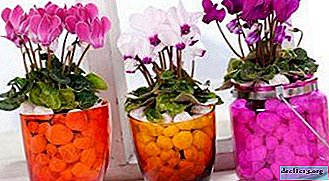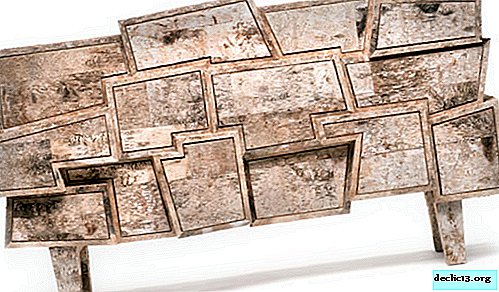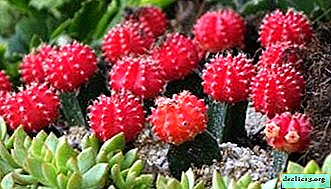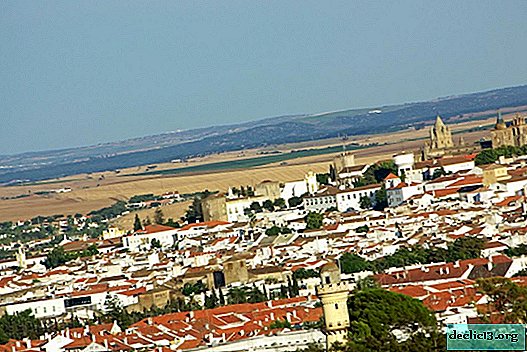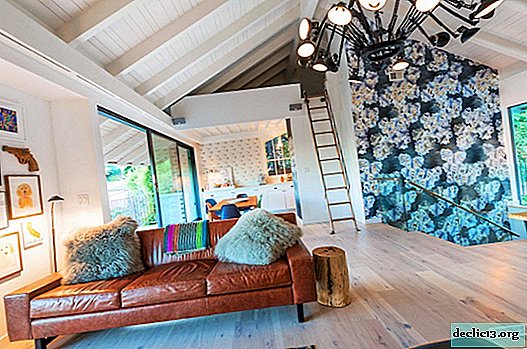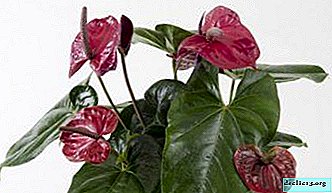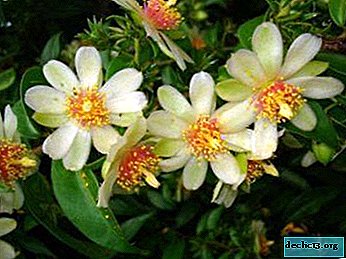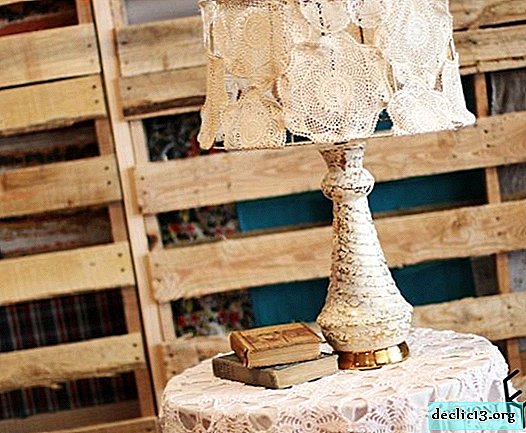Types of gardenia: Tahitian, Regal, Ternifolia and others. Description and general care
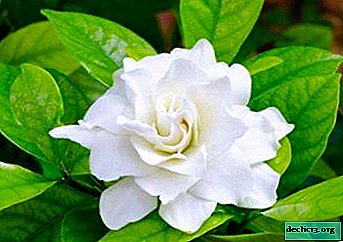
Gardenia is a wonderful decorative culture, which is presented in the form of a bush.
It can be grown indoors or outdoors.
There is a wide variety of gardenia varieties, each of which has its own characteristics in terms of appearance and care.
In the article, we will consider each and the species in detail, and also learn how to care for them.
Houseplant Description
Gardenia is an evergreen bush belonging to the Marenov family. The homeland of the plant remains the tropics of Africa and Asia. Under natural conditions, the height of the bush reaches 1.5 m. The leaves are oval in shape, the tips are pointed. The sheet plate itself is dense, leathery, glossy. Its length is 10 cm.
The flowers are large, diameter 7-10 cm, color white or cream. Very fragrant, and in shape similar to roses. Flowers can be double and simple. Flowering lasts throughout the summer and half of the autumn. After that, the fruits - berries begin to ripen.Kinds
Aimee yoshioka
This species is one of the most popular. Designed for indoor cultivation. The variety was obtained not so long ago, but has already managed to become a favorite among flower growers. Features of this gardenia is that its flowering lasts 2 times a year. This greatly prolongs its decorative effect. Inflorescences are white in shape, resembling a rose. They have a delicious and incredibly pleasant aroma.

Brighamii
This variety grows in Hawaii. And if before it was located on almost all the islands of the Hawaiian archipelago, today the number of such shrubs has significantly decreased. The height of the plant reaches 6 m, so it will not be suitable for indoor cultivation. The leaves may be light or dark green. This creates a variegated tree feel. The leaf plate is not lowered, bare, there are bright veins. Flowering simple form, white color. They differ in intense and very pleasant aroma.

Radicans
This variety is one of the most popular among indoor varieties. For a set of miniature sizes, the bush is conveniently grown in pots. Radikans differs in the unusual shape of the flower, as it is double, due to which the decorativeness of the plant is enhanced. The leaves are glossy, have the correct lanceolate shape.

Tunberg
This is a fairly effective type of plant. The bush is evergreen and incredibly fragrant. The leaves are large, regular in shape, the surface is glossy and dark green. The flowers are incredibly beautiful, their size is 7-8 cm. The color is snowy white, and the shape resembles a fan. The aroma of Tunberg gardenia flowers intensifies at night.

Tahitian
Judging by the name, the homeland of the flower is Tahiti. This is a large variety of gardenia, the height reaches 6-7 m. The leaves are large, rich green color. They are leathery, and the length is 30 cm. The shape of the leaf plate resembles an oval. The flowers are also large, with a diameter of up to 20 cm. They smell pleasant and stay on the bush for several days. It is difficult to determine the time of flowering of the bush, since this happens spontaneously and only if all agrotechnical rules are observed.

Variegate
The plant has a decorative appearance, since it has double and white flowers. Variegated leaves that only add external beauty. The sheet plate is characterized by a characteristic glossy sheen, and the pattern is similar to pale yellow stains that spread over a dark green background.

Regal
The variety is quite interesting, since creamy white flowers. It belongs to indoor plants, although it can be grown in open ground, but it should only winter in the warmth. The leaves are oval, dark green. During flowering, the bush, in addition to its decorative appearance, emits a delicate aroma.

Gardenia ternifolia
The plant is in demand among gardeners due to its interwoven branches. Aromatic and large white flowers are picturesquely scattered on them. The variety is decorative and resistant to chlorosis. It was bred in Thailand.

Pink
The culture was called Amoyen, as it is a rare species. It is rarely grown in gardens and homes, and Pink Gardenia can be found in huge botanical gardens. The trunk and branches of the plant are covered with thorns, smooth leaves, which have an oval shape and the tips are pointed. The flowers are pink in color, located at the tips of the shoots.

Carinata
It is an evergreen and compact bush with rarely spaced flowers that emit a delicate aroma. This variety is interesting in that over time the flowers are able to change their color: from marble-white to lemon. At the end of life, they turn dark orange. In nature, gardenia grows slowly, but is able to reach a height of 15 m. At home, it is not grown, as it is more a tree than a shrub. The birthplace of culture is Malaysia.

Golden magic
The variety was introduced not so long ago. It differs in leathery and fleshy leaves of dark green color. The flowers are large and double, have an unusual color - bright yellow.. Initially, the bud opens with white petals, but over time they become golden. The variety is quite decorative, so it will perfectly decorate any garden or flower bed.

Vietnamese
The shape of this shrub is very interesting, since the flowers are similar to six-pointed stars. Their color is white, so that they stand out against the background of dark green foliage. The bush is compact, so it can be used for growing a house. Their shape is oval, they grow densely. On one petiole, approximately 3 leaves can be located. The flowers are large, with a diameter of 8 cm. The petals have a rather interesting shape - they curl up into a tube, resulting in a flower acquiring a star-like appearance.

Blue
This variety is quite rare. His flowers are blue or turquoise. Blue gardenia is in high demand in the textile industry and painting. During flowering, the bush looks very beautiful, since many flowers are collected in spherical inflorescences. On one bush they can be 3-4. The leaves are light green, the tips are pointed.
General care rules
To gardenia pleased with its evergreen leaves and beautiful flowering, you need to follow the simple rules for care:
- Grow indoor plants on well-lit window sills from the south or west. But only direct sunlight should not be. From 11 to 17 hours you need to create a claim to the flower using tulle or transparent paper. In summer, take the pot out if the weather is good. If you grow a bush in the garden, then choose a place where there will be no direct sunlight, drafts, rain and wind.
- In winter, with a lack of natural light, create artificially additional lighting. Conventional fluorescent lamps will do. Position them at a distance of 60-70 cm.
- For full growth and flowering, a temperature of 22-24 degrees is necessary. In winter, the temperature can be lowered, but only gradually to around 18 degrees. the temperature of the soil when growing a flower should correspond to the temperature of the air.
- During the growth period, provide the crop with abundant watering, but in winter - moderate. There is no need to overmoisten the soil or dry it out (you will learn about the choice of soil and gardening pot here). Otherwise, the plant will wither. For irrigation use only standing and soft water. If this rule is not fulfilled, then the leaves begin to turn yellow and fall off. Read about gardenia leaf problems here.
- Humidity should be low, especially before buds are formed. As soon as they begin to blossom, spray the bush, and during the period of intensive flowering, stop this procedure. The reason is that gardenia after the formation of flowers no longer needs air humidity, and when water gets on the petals, ugly brown spots form on their surface. This negatively affects the decorative bush. Learn why gardenia does not bloom and what to do in this case, find out in this article.
- Fertilizing make 2 times a month. Moreover, organic and mineral compounds alternate. You can use such top dressings as Vito or peat humic. If the castings began to turn yellow, then spraying with iron sulfate will help save them.
Gardenia is an incredibly beautiful bush, characterized by beautiful snow-white flowering. Each of the above varieties is unique in its own way, while they need careful and regular care. Only then will flowering be long, fragrant, and the bush itself will be evergreen.

